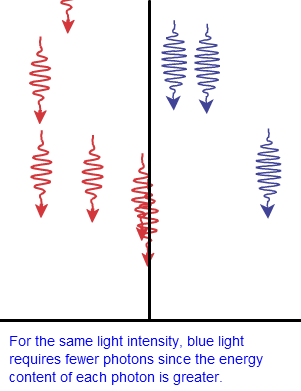The photon flux is defined as the number of photons per second per unit area:

T he photon flux is important in determining the number of electrons which are generated, and hence the current produced from a solar cell. As the photon flux does not give information about the energy (or wavelength) of the photons, the energy or wavelength of the photons in the light source must also be specified. At a given wavelength, the combination of the photon wavelength or energy and the photon flux at that wavelength can be used to calculate the power density for photons at the particular wavelength. The power density is calculated by multiplying the photon flux by the energy of a single photon. Since the photon flux gives the number of photons striking a surface in a given time, multiplying by the energy of the photons comprising the photon flux gives the energy striking a surface per unit time, which is equivalent to a power density. To determine the power density in units of W/m², the energy of the photons must be in Joules. The equation is:
he photon flux is important in determining the number of electrons which are generated, and hence the current produced from a solar cell. As the photon flux does not give information about the energy (or wavelength) of the photons, the energy or wavelength of the photons in the light source must also be specified. At a given wavelength, the combination of the photon wavelength or energy and the photon flux at that wavelength can be used to calculate the power density for photons at the particular wavelength. The power density is calculated by multiplying the photon flux by the energy of a single photon. Since the photon flux gives the number of photons striking a surface in a given time, multiplying by the energy of the photons comprising the photon flux gives the energy striking a surface per unit time, which is equivalent to a power density. To determine the power density in units of W/m², the energy of the photons must be in Joules. The equation is:
Power Density
where Φ is the photon flux and q is the value of the electronic charge 1.6 ·10-19
Power Density
One implication of the above equations is that the photon flux of high energy (or short wavelength) photons needed to give a certain radiant power density will be lower than the photon flux of low energy (or long wavelength) photons required to give the same radiant power density. In the animation, the radiant power density incident on the surface is the same for both the blue and red light, but fewer blue photons are needed since each one has more energy.
- Log in or register to post comments
- 7 comment(s)
 Español
Español 한국어
한국어 简体中文
简体中文 Bahasa Indonesia
Bahasa Indonesia
